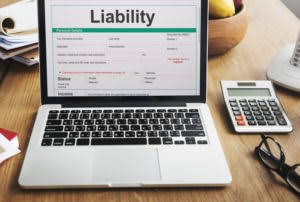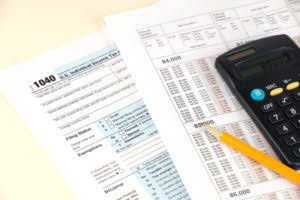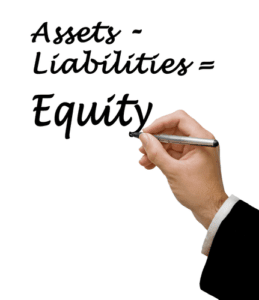
If a returned ACH payment needs to be reinitiated, banks may impose reinitiation fees. Reducing these fees involves minimizing transaction errors and ensuring clear communication with customers. Tools like AR automation help identify issues early and reduce refund requests. ACH debits are ACH payments that are “pulled” from the payer’s account and deposited into the payee’s account. The key difference between ACH credits and ACH debits is that direct deposits involve ach return charge funds being pushed into an account.

How to Initiate an ACH Refund
Returns that meet one of the five conditions must be sent fixed assets in within five days of the return’s settlement date. Once the dispute has been received, the RDFI still has the ability to contest the dispute. If contesting occurs, the dispute is no longer an issue within the ACH network. In accordance with NACHA, the RDFI and ODFI are responsible for handling the resolution of these returns. While the provider and the client can contact each other directly to discuss the issue, the return cannot be undone until at least one of the involved financial institutions is contacted.
What are the risks of too many ACH returns?

Nacha governs the ACH network and mandates that businesses keep their overall ACH return rates under 15%. Below, we’ll cover what causes ACH returns, their impact on businesses, ACH return fees, and best practices for handling ACH returns. Return codes can happen, regardless of how many safeguards are in place. At ACHQ, we help our clients understand the ACH returns process so they’re able to utilize our payments platform to its full potential.

Steps to take once you receive an ACH return notification
- Outside of commercial applications, ACH is also heavily used by the U.S. government to send payments such as tax refunds, Social Security benefits, and other government assistance programs.
- Offering ACH payments provides customers with the option to use the payment process that works best for them.
- These codes are there to help your business understand why the ACH transaction was returned.
- In accordance with NACHA, the RDFI and ODFI are responsible for handling the resolution of these returns.
The ultimate goal of understanding these ACH codes is to help your business prevent ACH returns proactively, improving cash flow and reducing administrative costs. ACH debit refunds take three to seven days to process, meaning the funds will take three to seven days to return to the payer’s account. ACH return fees range from $5 to $25 per return, so it’s important to understand what’s causing the returns and how to prevent them. ACH payments are a generally secure and reliable form of payment, and these returns likely only make up a small fraction of payments. However, understanding how they work can simplify the resolution process. A dishonored return must be transmitted within five banking days of the settlement date of the return.
- An ACH Debit is a kind of electronic transaction that allows a receiver the authorization to directly pull money from a payer’s account.
- In contrast, direct payments (ACH debits) involve funds being pulled out of an account.
- Your transaction might be returned if there aren’t enough funds in the account, if the account is closed, or if the account details are incorrect.
- Most of the transactions in the respective ACH network tend to be ACH debits.

Because of that, companies using ACH for recurring payments are less likely to experience payment churn than those that use credit cards. While ACH returns are best understood as rejected payments – like a bounced check – an ACH reversal is a request to cancel a completed transaction. The latter must be initiated within five banking days of the original transaction. This could be due to insufficient funds,wrongly-entered account details, or the customer claims they did not authorize the transaction – to name a few of the most common reasons. Failure to provide accurate bank account information, account freezing, payment interruption, etc., are additional causes of unsuccessful transactions. The originator initiates a payment through their bank to the receiver’s bank.
How to reverse ACH Debit Return Charges?
- Many consumers prefer ACH payments and merchants often tie ACH payments to rewards programs so they can pass back some of their lower payment processing costs to customers while boosting loyalty.
- You should be aware that a consumer has the right to request a return as an unauthorized ACH payment within 60 days from the transaction date.
- Now that you understand how ACH return and reversal processes vary, you can learn more about other key differentiators between the two.
- Each code consists of the letter ‘R’ followed by a two-digit number between 01 and 85.
- When the receiving bank notices a duplicate transaction that’s similar to a recently made payment, it may issue a return to the sender’s account.
Keeping lines of communication open with your customers can reduce avoidable ACH returns. This is particularly relevant to avoid ACH returns for inactive bank accounts, claims of unauthorized payment or insufficient funds. An ACH debit return is like a bounced cheque, which occurs when the system faces an error. Multiple errors can lead to ACH return but the primary error is insufficient funds in the payer’s account. It is demanded by the bank and these charges may vary depending on the initial payment.

However, a large volume of ACH returns may cause your business to be flagged by the National Automated Clearing House Association (NACHA), the governing body that oversees the ACH network. Depending on the bank and the reason for the rejection, the customer may be required to authorize the transaction again under a new ACH file. In the ever-evolving world of finance, staying educated and adaptable is the key to achieving financial success. Take charge of your investments, mitigate risks, and pave the way towards a secure financial future. In both cases, the merchant will be charged a return fee between $2 and $5. As far as I know, the mandate fee is Rs 50 plus GST and the ECS Electronic Clearing Service failure fee is Rs 250 plus GST.
Wero is reshaping payments across Europe
Typically, an ACH Return comes from the RDFI, but in some instances the ODFI or even the ACH Operator might send such a message. ACH Returns must be sent within time frames established by Nacha operating rules. Although these processes share similarities, ACH reversals carry a few extra steps. Generally speaking, Online Bookkeeping a few returns a month shouldn’t be anything to worry about, as almost every business has to deal with them at some point.
Learn How GETTRX One Simplifies Payment Reporting
- In this guide, we’ll explain the different types of ACH fees, what impacts their cost, and how to negotiate better rates for your business.
- Depending on the bank and the reason for the rejection, the customer may be required to authorize the transaction again under a new ACH file.
- ECS return charges disrupt systematic investment plans, hinder compounding effects, and may harm your credit score.
- These charges can chip away at your returns and erode the gains you’ve diligently accumulated over time.
- The financial transfers that are made in an electronic format are mandated by ACH or Automated Clearing House.
- Recover 4x more chargebacks and prevent up to 90% of incoming ones, powered by AI and a global network of 15,000 merchants.
- Automated Clearing House (ACH) payments are one of the easiest ways to receive money as an eCommerce merchant or vendor.
Sometimes, you may also receive a Notice of Change (NOC) in addition to an ACH return. NOC occurs when a customer’s bank account information changes as a result of a merger, shift in the account or another reason. You might receive the R04 return code with a NOC where the RDFI will send updated account information for the ACH request.




